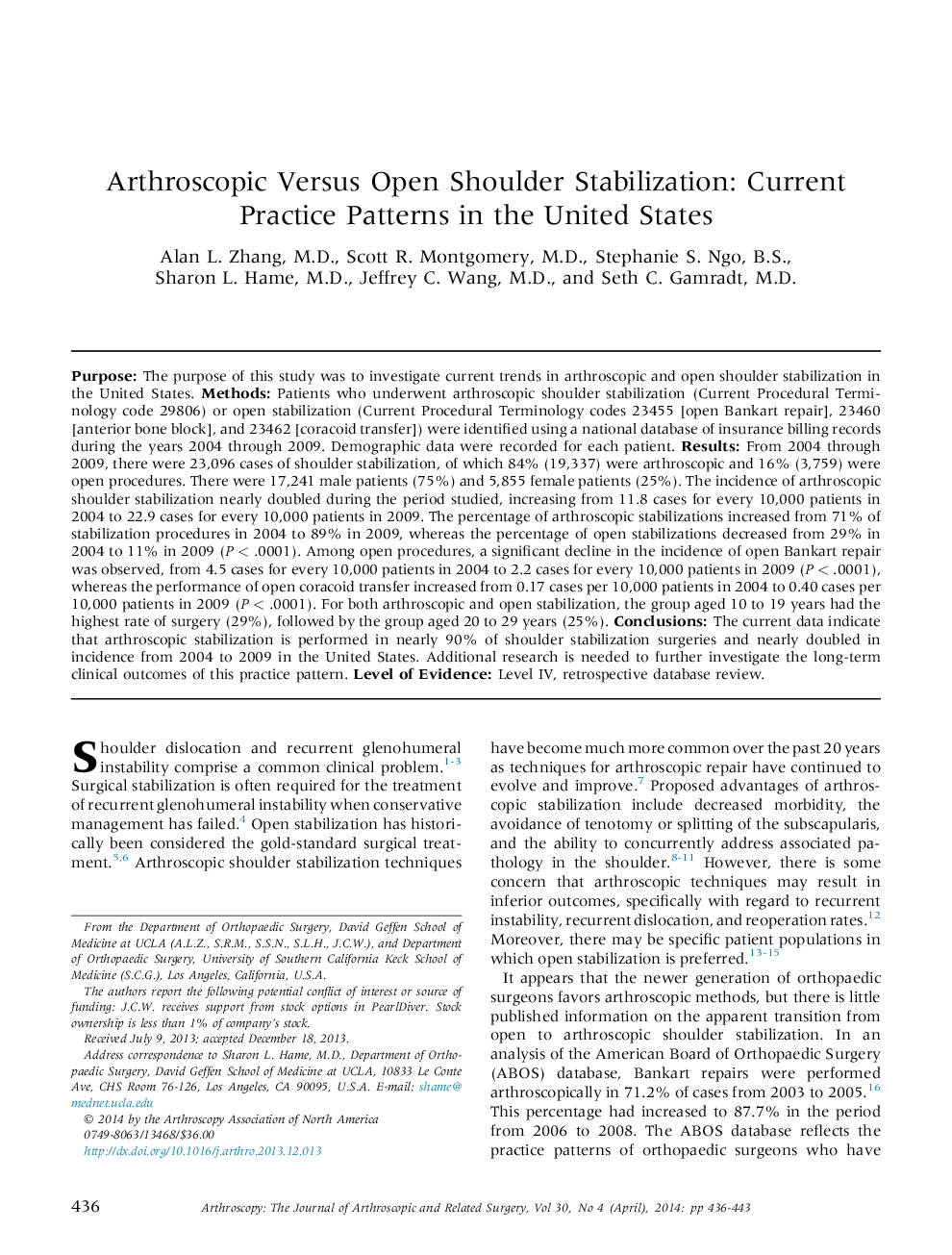| کد مقاله | کد نشریه | سال انتشار | مقاله انگلیسی | نسخه تمام متن |
|---|---|---|---|---|
| 4043140 | 1603498 | 2014 | 8 صفحه PDF | دانلود رایگان |
PurposeThe purpose of this study was to investigate current trends in arthroscopic and open shoulder stabilization in the United States.MethodsPatients who underwent arthroscopic shoulder stabilization (Current Procedural Terminology code 29806) or open stabilization (Current Procedural Terminology codes 23455 [open Bankart repair], 23460 [anterior bone block], and 23462 [coracoid transfer]) were identified using a national database of insurance billing records during the years 2004 through 2009. Demographic data were recorded for each patient.ResultsFrom 2004 through 2009, there were 23,096 cases of shoulder stabilization, of which 84% (19,337) were arthroscopic and 16% (3,759) were open procedures. There were 17,241 male patients (75%) and 5,855 female patients (25%). The incidence of arthroscopic shoulder stabilization nearly doubled during the period studied, increasing from 11.8 cases for every 10,000 patients in 2004 to 22.9 cases for every 10,000 patients in 2009. The percentage of arthroscopic stabilizations increased from 71% of stabilization procedures in 2004 to 89% in 2009, whereas the percentage of open stabilizations decreased from 29% in 2004 to 11% in 2009 (P < .0001). Among open procedures, a significant decline in the incidence of open Bankart repair was observed, from 4.5 cases for every 10,000 patients in 2004 to 2.2 cases for every 10,000 patients in 2009 (P < .0001), whereas the performance of open coracoid transfer increased from 0.17 cases per 10,000 patients in 2004 to 0.40 cases per 10,000 patients in 2009 (P < .0001). For both arthroscopic and open stabilization, the group aged 10 to 19 years had the highest rate of surgery (29%), followed by the group aged 20 to 29 years (25%).ConclusionsThe current data indicate that arthroscopic stabilization is performed in nearly 90% of shoulder stabilization surgeries and nearly doubled in incidence from 2004 to 2009 in the United States. Additional research is needed to further investigate the long-term clinical outcomes of this practice pattern.Level of EvidenceLevel IV, retrospective database review.
Journal: Arthroscopy: The Journal of Arthroscopic & Related Surgery - Volume 30, Issue 4, April 2014, Pages 436–443
